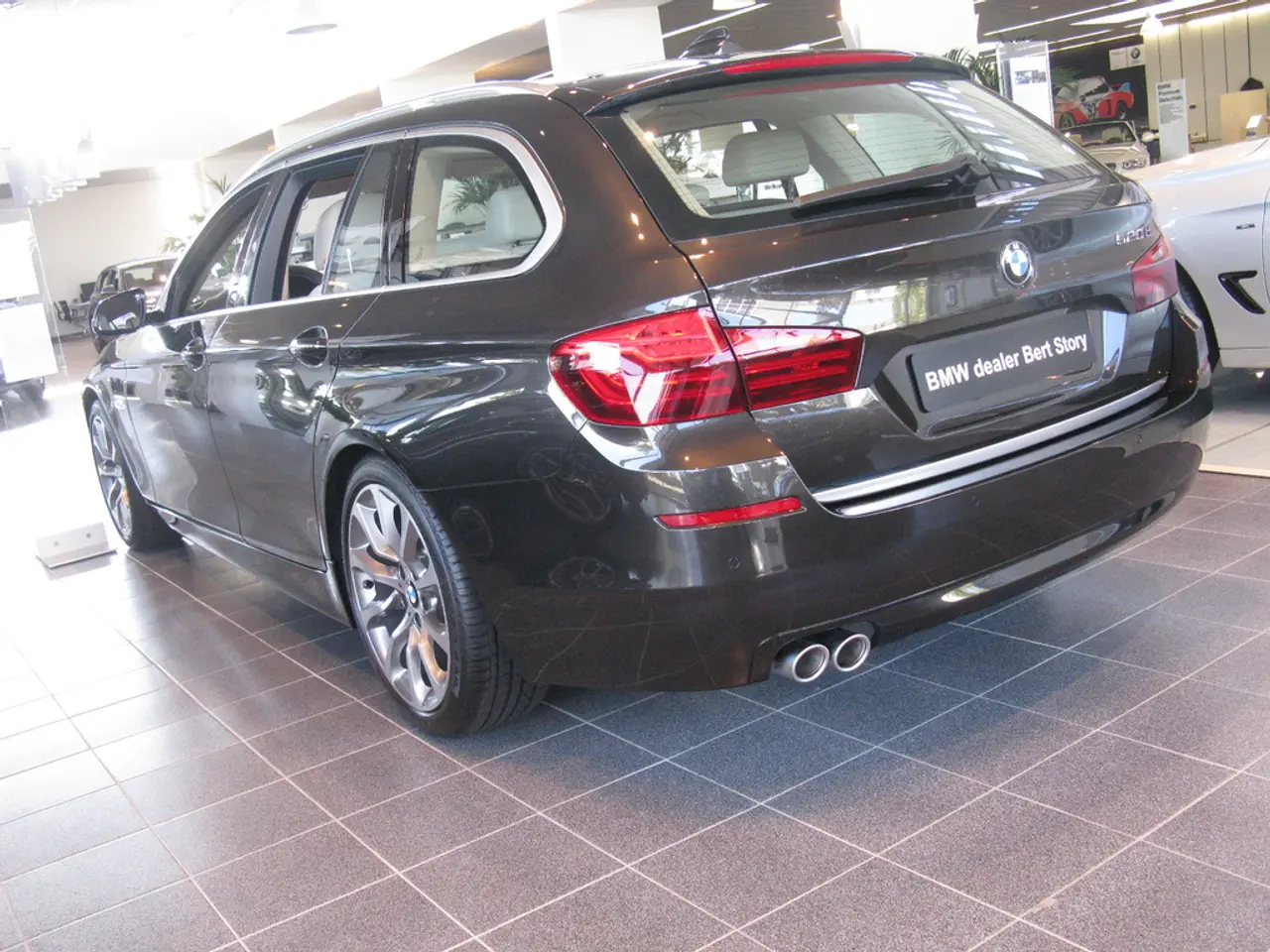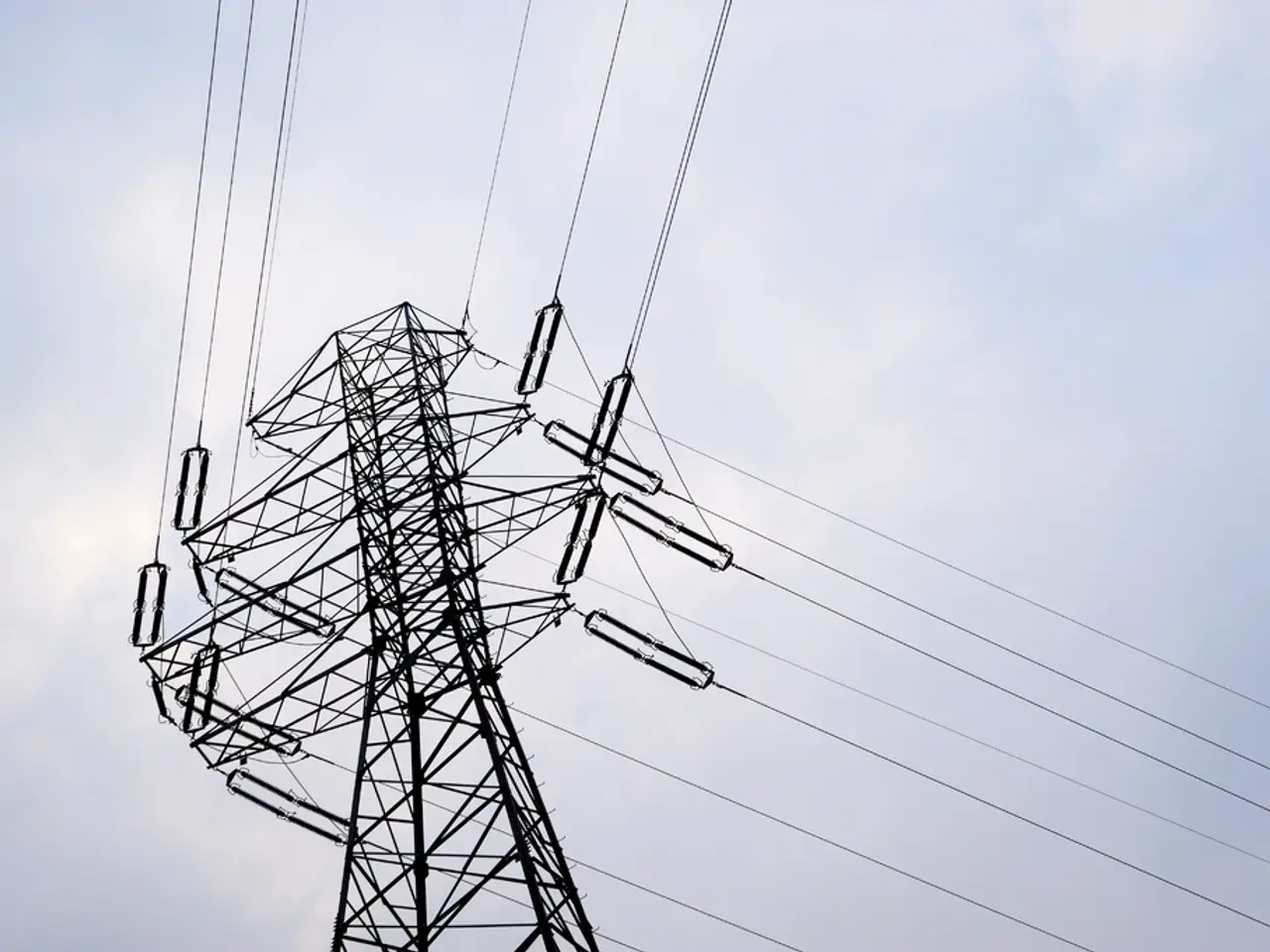Century-defining Marketing Disaster: Public's Ignorance Persists Regarding My Ford F-150 Lightning Electric Vehicle
Electric Vehicles Approach Price Parity and Win on Practicality
In the ever-evolving automotive landscape of 2025, the electric vehicle (EV) industry is making significant strides, with brands like Chery leading the charge on in-car technology. The focus of marketing strategies has shifted towards showcasing the practical benefits of EVs, balancing consumer demand, regulatory incentives, and infrastructure development.
Robust adoption of EVs is being driven by technological advancements, reduced costs, and expanded charging infrastructure. New EV units sold in the U.S. surpassed 300,000 in Q1 alone, marking a 10% year-over-year increase in some segments. This growth is a testament to the effectiveness of marketing that emphasizes reliability and usability in real-world conditions.
Consumer preferences for practical vehicle types are also shaping the marketing landscape. With family consumers favouring SUVs for their versatility and space, marketing strategies are increasingly targeting this popular segment. SUV-focused marketing addresses everyday needs, a key factor in wider public acceptance. Data shows that "electric SUV" search interest outpaces sedans and hatchbacks, indicating a market ready to adopt electric vehicles if aligned with practical lifestyle demands.
Plug-in hybrids (PHEVs) are also highlighted in marketing strategies to bridge infrastructure gaps, offering consumers practical alternatives to fully electric vehicles. This pragmatic approach helps alleviate range anxiety and usability concerns.
Affordability is another crucial factor in the industry's marketing strategies, with manufacturers promoting models like the Chevrolet Equinox EV and Hyundai Ioniq 6 to attract mass-market buyers. Practical affordability reduces cost barriers, expanding acceptance across different income segments.
Regional and global growth is being stimulated by policies worldwide, particularly in emerging markets, which are fostering industrial strategies and expanding manufacturing capacity. Marketing in these regions stresses practical benefits aligned with economic and environmental policy frameworks, further enhancing acceptance.
Leading manufacturers like Tesla, General Motors, Hyundai, and others are employing consumer-centric strategies, focusing on product practicality, addressing segments with strong growth potential (like electric SUVs and hybrids), and increasing sale incentives.
In summary, the marketing strategies of 2025 centre on demonstrating the practical benefits of EVs—through vehicle variety (especially SUVs), hybrid options, affordability, and improved infrastructure—that align with consumer needs and drive stronger public acceptance. The focus on practicality has helped mitigate barriers such as range anxiety and cost concerns, accelerating adoption and normalising EVs as everyday vehicles.
EVs offer benefits beyond what gas-powered cars can, including quiet rides, fast acceleration, and long-term savings. They are cheap to own, have low maintenance, and feature innovations like a frunk. The immediate future of the EV industry focuses on cost, which might mean more reliance on Chinese battery suppliers to hit price targets.
Successful green products, it is emphasised, deliver real value that customers care about, such as performance, convenience, or design. There is a lot of discussion about this on social media, with users sharing their experiences and insights. AJDillonsThirdLeg, who has owned an EV since 2018, has spent $0 on maintenance outside of tires and never had to stop to get gas.
However, some people are spreading disinformation about EVs, claiming they are unreliable, have high maintenance costs, are expensive, time-consuming to charge, and use metal that will destroy the world. Electric trucks like the Ford F-150 Lightning are changing perceptions, offering instant torque, smooth acceleration, and serious towing power.
If the industry had emphasised the practicality of EVs as commuter or car camping vehicles, the public desire for them might have been vastly different. The Ford F-150 Lightning is mentioned as an example of an EV that impresses people with its instant torque and no gear shift. Many people working in construction have no idea what a frunk is or the torque and acceleration of EVs.
Most people choose electric vehicles for practical, money-saving reasons, with lower charging costs, lower lifetime ownership costs, and lower maintenance costs being the top reasons. China's success with electric vehicles is due to a nationwide strategy that ties together battery production, rare earth mining, charging infrastructure, and vehicle manufacturing, creating a fully integrated supply chain and a domestic market where more than half of new cars sold are electric or plug-in hybrid.
The electric vehicle industry is believed to have missed an opportunity with its marketing rollout, focusing on environmental narratives instead of practicality. Chris Johnston, author of "The Arrival of The Electric Car," covers electric vehicles on Torque News and has decades of product management experience in telematics, mobile computing, and wireless communications. The industry is said to have fallen victim to "green marketing myopia," focusing too heavily on the environmental side while neglecting consumer needs or not promoting other benefits that customers care about.
[1] Source: https://www.forbes.com/sites/alanohnsman/2022/05/03/q1-2022-ev-sales-exceed-300000-in-us-as-new-units-rise-10-year-over-year-in-some-segments/?sh=564f55e24b64 [2] Source: https://www.cnbc.com/2022/05/03/electric-vehicle-sales-in-the-us-hit-300000-in-q1-2022-up-10-year-over-year-in-some-segments.html [3] Source: https://www.autoblog.com/2022/05/03/q1-2022-ev-sales-exceed-300000-in-us-as-new-units-rise-10-year-over-year-in-some-segments/ [4] Source: https://www.reuters.com/business/autos-transportation/emerging-markets-boost-electric-vehicle-sales-2022-05-02/
In the rapidly evolving automotive market of 2025, marketing strategies prioritize showcasing the practical advantages of electric vehicles (EVs) by emphasizing vehicle types such as SUVs, hybrids, and innovative features like a frunk. These tactics aim to address everyday needs and boost public acceptance, as demonstrated by the surging popularity of electric SUVs. (First sentence)
To cater to a broader audience and drive further adoption, manufacturers are promoting affordable models like the Chevrolet Equinox EV and Hyundai Ioniq 6, targeting mass-market buyers who value affordability alongside practicality. (Second sentence)




